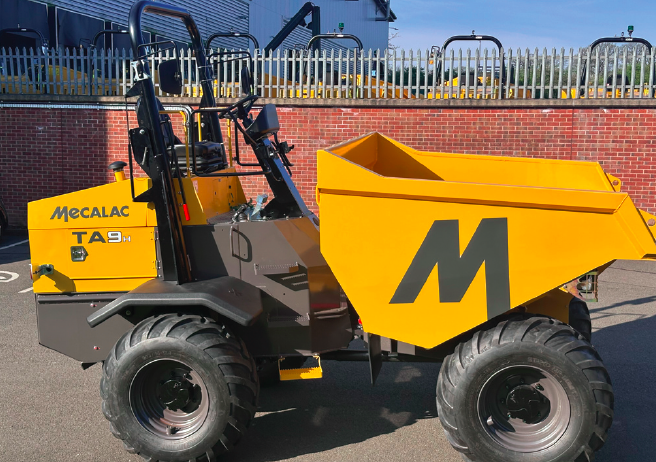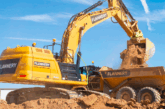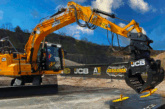
In response to EN-474, Mecalac has updated its range of dumpers but maintains its offering of the cabless TA9H.
To help its customers meet changing regulatory requirements, Mecalac is adapting its entire range of dumpers to the new European standard EN 474, which came into effect last February. The company says the aim is to guarantee machine compliance while maintaining efficiency and ease of use in the field.
The TA, MDX and Revotruck ranges – 15 models in all – have been adapted to fully meet the new safety requirements. Every Mecalac dumper is now fitted as standard with features that enhance safety and ease of use, including hydrostatic transmission for smooth, controlled driving, side mirrors for improved visibility, an inclinometer to ensure safe tipping operations, additional side protection for the operator, in addition to the ROPS (for 6- and 9-tonne models) and a front-facing camera (except for the TA1 model).
While most manufacturers have withdrawn their cabless 9-tonne dumpers because of the constraints imposed by the EN 474 standards, Mecalac has chosen to keep the front-dump TA9H in its catalogue.
Upgrades all round
To ensure compliance, the model has undergone specific development, incorporating structural modifications, the integration of a hydrostatic transmission and the addition of side guards. This approach meets the regulatory requirements while retaining the qualities that have made the TA9 a popular machine namely simplicity, reliability and robustness.
The TA9H is a safe, compliant solution, perfectly suited to the needs of those seeking a cab-free alternative for its ease of transport and its ability to operate in environments with limited height, without compromising safety or operating costs.
Because safety is nonnegotiable, Mecalac says it designs its machines to protect operators and their environment. This commitment is reflected in all its machines, and is fully reflected in the Revotruck: designed from the outset with particular attention to visibility, stability and ergonomics, it goes well beyond the requirements of standard EN 474.
For more information, please go to WWW.RDR.LINK/CBC026








